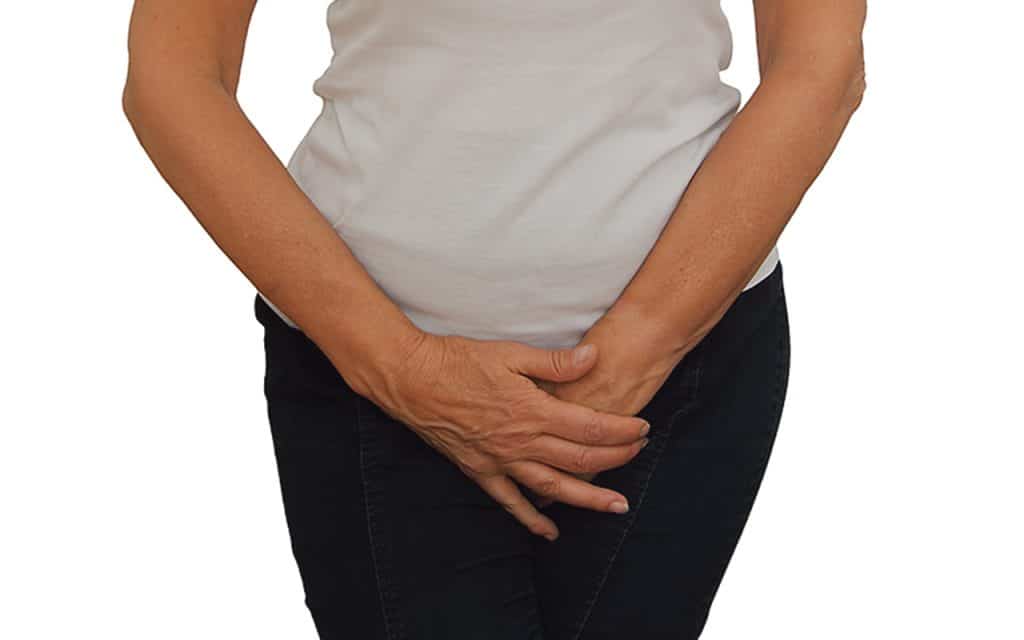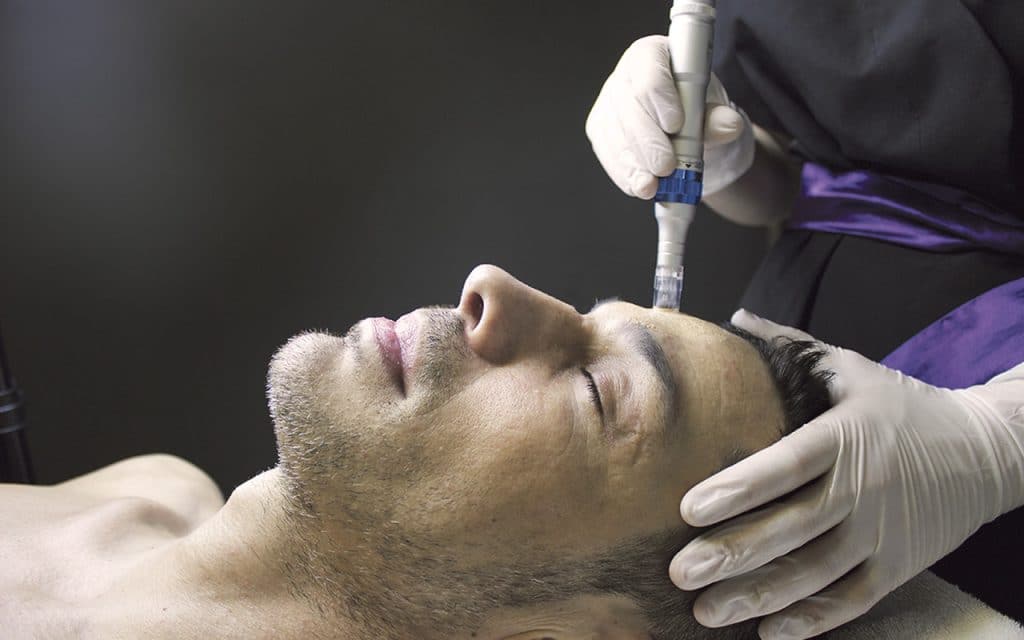Hormonal skin issues is a frequently neglected area and skin problems are common during the perimenopause and menopause. We have oestrogen receptors in pretty much every organ in our body, which are impacted by fluctuating and unpredictable oestrogen levels in perimenopause, and the skin is no exception.
Acne
Acne is a common problem in the week before a woman’s period related to the background hormonal changes at that time. Acne can also be a problem for the first time during the perimenopause. The combined oral contraceptive pill is a very effective treatment for acne and many of the newer pills are very safe to use over the age of 40.
Dry skin
More common during perimenopause and menopause are skin issues related to dryness and sensitivity.
As women, our skin generally becomes a little dryer as we age. But what you might not know is that when skin gets very dry, it gets very unhappy. Dry skin can result in micro splits in the epidermis or top layer of our skin, which then facilitates the skin layers underneath drying out even more. When those layers get very dried out, an inflammatory response occurs; yes – you literally break out in a rash because your skin is so dry.
The first line is buckets of emollient! Emollient is another word for a moisturiser, describing a good heavy cream, usually free from colours or scent. Unless you have particularly oily skin, you should be getting through a 500ml tub of emollient in two to three weeks. That means just rubbing a pea size blob onto a dry or itchy patch of skin will not work; you need to slather it on all over.
Which cream, doctor?
There is no magic cure-all cream for dry, menopausal skin; do not listen to the guff on social media! It will be someone flogging a product. As a general rule, avoid fancy expensive products; invariably they contain more additives; colours and scent. Stick to a basic gloop-type emollient; typically used for eczema-dry skin. If any product feels like it irritates your skin then you may be sensitive to one or more of the ingredients.
Lanolin, a sheep protein commonly present in emollients, is a fantastic moisturising agent but some people are sensitive to it.
Other irritant ingredients in moisturisers can be parabens, petroleum products and SLS or sodium laurel sulphate. Generally, SLS is only an issue when the skin is already quite inflamed such as in active eczema in kids.
I am not advocating one brand over another; if it moisturises your skin, it’s a great cream. Always ask your pharmacist for a generic or non-brand emollient; why give even more money to the pharmaceutical companies? Bottom line – read the ingredients.
As a ginger and a woman of a certain age…I remember the sock-full of oats hung into the bath and having your mam slather the gloop that came out of the sock all over you before she would let you out. Not an old wives tale: coarse oatmeal contains compounds known as avenanthramides. Avenanthramides have anti-inflammatory and antioxidant properties, which can help reduce skin inflammation and relieve itching. Additionally, oatmeal forms a protective barrier on the skin, locking in moisture and promoting skin healing.
An old-fashioned remedy for dry skin is Vaseline; this actually acts as a barrier to the skin, not a moisturiser, and the petroleum ingredient can be irritant.
Antihistamines
If you have itchy, burning rashes on your skin; as well as emollients, use a non-sedating antihistamine tablet like cetirizine or loratadine – both can be bought over the counter.
Perimenopause and menopause skin symptoms can be quite odd and seem unrelated to simple dryness, as they don’t always resolve with moisturisers alone. I have had women describe burning of the skin or a feeling like ants crawling under the skin. These symptoms generally completely resolve with hormone therapy.

Down below…GSM
The skin of your external genital area is very sensitive. We are all used to moisturising the rest of our body but how many women out there purposefully moisturise the skin of the vulva and surrounds?
GSM or Genitourinary Syndrome of Menopause is the term for the collection of symptoms that occur as a result of fluctuating and falling oestrogen levels. GSM symptoms involve the external genital skin, the vagina and the urinary tract.
Skin: itching, dryness, burning and irritation of the skin of the external genital area are common in perimenopause and menopause.
This can be focal, with one particular spot itching and burning like mad or more diffuse. Often women itch in the night and can wake up very sore with scratch marks and sometimes splits in the skin.
Vagina: The vagina feels dry and intercourse can be uncomfortable or even painful as a result. Obviously, this has knock-on effect on libido, as well as our relationships.
Urinary: Fluctuating and falling oestrogen levels commonly result in increased urinary frequency; dashing to the loo 10 times a day and needing to get up at night two or three times. Passing urine can be uncomfortable and feel like low grade cystitis. It can cause or worsen pre-existing stress incontinence; meaning we leak more easily when we laugh or sneeze. Lack of oestrogen in the years following our menopause can result in recurrent urinary infections, as well as incontinence in later life.
Treatment: Vaginal moisturisers and lubricants are readily available over the counter.
Lubricants are just that; you pop it in the vagina before you have sex; it has a short-term effect on lubrication. Vaginal moisturisers are longer acting so using two or three times a week can result in the skin outside as well as the mucosa inside the vagina feeling comfortable and sex stops being painful. Again, no one product is better than the other.
Look for the ingredients; moisturisers can be water, oil or silicone-based. Studies have shown the oil and silicone-based ones are more effective. There are a few brands out there women may have heard of such as YES and Replens. Each brand usually has a number of different products in their range; ie water, oil or silicone based. Be aware that silicone and oil-based products can affect condom integrity.
Newer vaginal moisturiser products such as Hyalo Gyn and Hyalofemme contain hyaluronic acid, and studies show these to be really effective. Moisturisers and lubricants are not available on prescription so you need to buy these yourself.
Vaginal Oestrogen: The gold standard treatment for any GSM symptom is local oestrogen therapy; and skin and vaginal symptoms tend to completely resolve within a week or two. GSM urinary symptoms of peeing very often, discomfort when you pee, leaking and UTIs do not resolve with moisturisers and lubricants alone.
Therapy can be in the form of a cream, Ovestin, which can be applied to the skin externally, as well as used up inside the vagina with an applicator. Vaginal pessaries, such as Vagifem, are also available. The product you use is a matter of choice; they both contain the same ingredient.
Vaginal oestrogen is NOT Hormone replacement therapy, despite what information sheets in the packaging says. Using vaginal oestrogen does not increase your risk of breast cancer. Its use has been studied in breast cancer survivors and there is no increased risk of cancer recurrence.
Vaginal oestrogen can be started at any age; I have seen many 75-plus-year-old women having recurrent UTIs, which completely resolve with vaginal oestrogen – it is safe at any age. Furthermore, studies have shown that using vaginal oestrogen lifelong will treat, as well as prevent UTIs, and support your pelvic floor strength, to minimise and prevent incontinence issues in our 80s.
And good news – all vaginal oestrogen products are available free on prescription if you have a medical card and are covered under the DPS, drug prepayment scheme.
Not tonight, darling! Men do not have a cliff-face drop in their testosterone levels at 50 like we do with our oestrogen through the menopause. So, they just don’t get it when we try to explain that it just does not feel right down there; we have an urge to pee every 30 minutes, sometimes leak, it’s burning and uncomfortable in the area, intercourse felt like razorblades the last time we tried so the last thing on your mind is letting him anywhere near that department! If he had issues with really sore, burning, itching willie and scrotal skin, it hurt when he peed, he’d had two urine infections in the last six months and leaked a bit when he laughed, he might not be feeling very sexy either.
On a more serious note there are certain skin conditions that affect the genital area that it is vital to diagnose and treat early such as Lichen Sclerosis and Lichen Planus.
Lichen Sclerosis is an inflammatory skin condition, confined to the genital area and can affect the skin of the perineum and anus. It carries an increased risk of vulval skin cancer.
Lichen Planus is also an inflammatory condition but can also affect other parts of the body like inside the mouth or more rarely inside the ears or around the eyes.
Both conditions can result in deformation and scarring of the external genital area and vaginal opening or even closure of the vagina if left untreated.
These conditions can present in the same way as menopausal skin issues with burning, itching and soreness of the skin of the external genital area but the examination findings are completely different.
Examination by a doctor is vital to establish a correct diagnosis and treatment plan.
In my roles as Gynaecology GP in Bantry hospital and as Menopause doctor in CUMH Complex Menopause Clinic, I see women who reluctantly admit to genital area symptoms only after I have specifically asked about them. Unfortunately, examination sometimes reveals significant abnormalities. It usually turns out that woman has never told her GP or asked for an examination. I cannot help but wonder how many of the doctors that have seen her over the years asked her about genital area symptoms?
Show your doctor your bits. So vitally, if you are having any symptoms involving the skin of your external genital area, around or inside your vagina, of the vulva, labia, flaps, lady curtains, whatever you call them, or any discomfort down there, you must tell your GP; you must have an examination.
If you have a male GP or would like to see me about any of the GSM symptoms mentioned in this article, ask your GP to refer you to Gynaecology outpatients in Bantry. To ensure you are seen in Bantry not Cork, your GP needs to select the Bantry gynaecologist, Dr Aenne Helps in the dropdown on the referral form.



